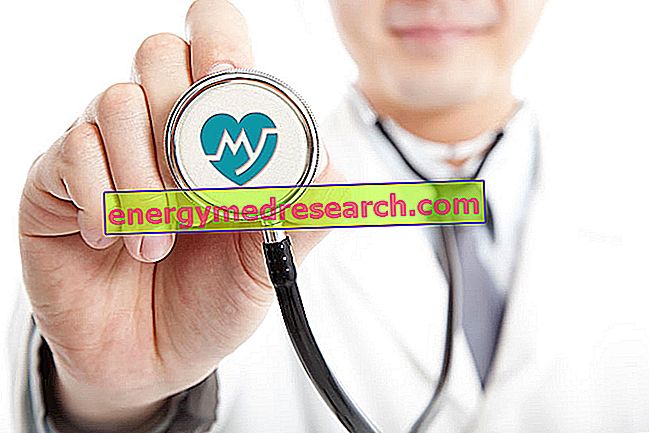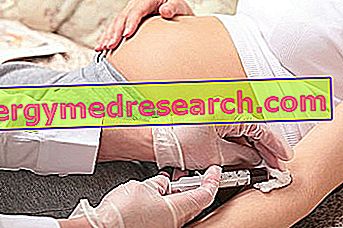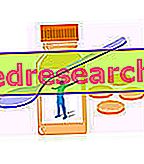Generality
Virchow's triad describes what are considered the main factors responsible for thrombus formation.

These are alterations affecting the endothelium of blood vessels, blood flow and blood coagulation and which can favor the appearance of thrombus, therefore, of thrombosis.
The Virchow triad owes its name to the German physician Rudolph Virchow who, in 1856, clarified in one of his publications the etiology of pulmonary embolism.
Did you know that ...
Although Virchow helped describe the physiopathology related to pulmonary embolism, it was not he who proposed the drafting of the aforementioned triad. However, for reasons unclear, several years after the death of the German doctor (indicatively, around the 1950s), the triad was developed and named after him. On the other hand, it is true that Virchow, in the drafting of his work, referred to the various factors that can contribute to the formation of thrombi; however, those same factors were not highlighted for the first time by the German doctor, but by other doctors before him.
What is that
What is the Virchow Triad?
As mentioned, the Virchow triad groups the main factors involved in thrombus formation inside the blood vessels.
More precisely, the following alterations occurring in the cardiovascular system are included in the Virchow triad:
- Endothelial damage ;
- Anomalies or alterations in blood flow (stasis and turbulence);
- Hypercoagulability .
The Virchow triad, therefore, represents a tool that can be very useful for doctors in understanding what are the causes and factors that contribute to the formation of thrombi, therefore, which contribute to the development of both venous and arterial thromboses.
The aforementioned factors will be analyzed in more detail.
Endothelial damage
Role of Endothelial Damage in Thrombus Formation
First element of the Virchow triad, endothelial damage is one of the factors involved in thrombus formation especially in the heart and arteries.
The endothelium is the inner lining tissue of blood vessels, heart and lymphatic vessels. It consists of the so-called endothelial cells and performs numerous functions, including:
- Barrier function;
- Regulation of coagulation, platelet aggregation and fibrinolysis;
- Regulation of inflammatory processes;
- Control and modulation of vessel tone and permeability.
The functions of the endothelium are therefore multiple, all essential for the correct functioning of the cardiovascular system and more. Of note is the role played by the tissue in question in the regulation of coagulation, thanks to which it is possible to prevent thrombus formation (antithrombotic action). In the event that damage to the endothelium should occur, however, the so-called endothelial dysfunction would occur which would lead to a decrease in antithrombotic activity in favor of an increase in pro-thrombotic and pro-inflammatory activity, with consequent thrombus formation.
The causes that can lead to the appearance of the endothelial damage mentioned in the Virchow triad can be manifold, among these we remember:
- Physical injury of the endothelium;
- Hypertension;
- Blood flow turbulence;
- Inflammatory agents;
- Exposure to radiation;
- Metabolic abnormalities, such as homocysteinemia and hypercholesterolemia;
- Absorption of toxins from cigarette smoke.
Please note
While according to some authors the alterations affecting the endothelium play a marginal role in the onset of thrombus compared to the other two factors of the Virchow triad; according to others, it plays a fundamental role, in particular at cardiac and arteriolar level. Indeed, in the absence of endothelial damage, the high speed of blood flow in the heart and arteries could prevent platelet adhesion and could dilute the coagulation factors, thus preventing the formation of thrombus. Not surprisingly, as mentioned, endothelial damage is one of the determining factors in the formation of thrombi in the arteries and in the heart.
Blood Flow Abnormalities
Role of blood flow in thrombus formation
At the second point of the Virchow triad we find the anomalies of the blood flow, other elements closely connected to the formation of the thrombi in the blood vessels. More in detail, both the turbulence and the stasis of blood flow are causal factors in the appearance of thrombosis. In fact, in the presence of similar conditions we are witnessing an increase in pro-coagulant activity .
In normal conditions - that is when the blood flow is not altered - the platelets tend to localize and flow in the central portion of the blood vessel, surrounded by the plasma which, therefore, is in contact with the endothelium and tends to flow more slowly.
In the presence of blood flow anomalies, however, this no longer flows in an orderly manner, but assumes a chaotic motion and / or undergoes a strong slowdown. More precisely, the blood flow turbulence is capable of causing endothelial damage and dysfunction and is capable of giving rise to countercurrents and local sacs in which stasis of the same blood occurs.
The presence of the aforementioned anomalies is the cause of an altered gene expression at the level of the endothelial cells that are found to produce greater quantities of pro-coagulant factors.
Moreover, when stasis is present, the platelets come into contact more easily with the endothelium, the activated coagulation factors accumulate and the influx of anticoagulant factors is reduced, with consequent formation of the thrombus. Among the possible conditions capable of giving rise to the stasis of blood flow, we recall:
- Aneurysms;
- Acute myocardial infarction;
- Mitral valve stenosis and atrial fibrillation;
- Polycythemia;
- Sickle cell anemia.
hypercoagulability
Role of Alterations of the Coagulation Pathways in Thrombus Formation
The last element - but certainly not of importance - reported in the Virchow triad is hypercoagulability. This is generally a minor factor with regard to the development of thrombus at the level of the heart and arteries, but of considerable importance as regards the formation of thrombus at the venous level. Consequently, hypercoagulability is considered one of the main risk factors for venous thrombosis .
To be more precise, the term "hypercoagulability" is used to indicate any type of alteration, anomaly or defect in the coagulation pathways that predispose patients who suffer from it to form thrombi.
In this regard, we recall that it is possible to distinguish two different types of hypercoagulability, that is, a hypercoagulability of genetic type and one of acquired type.
Genetic hypercoagulability is generally caused by the presence of localized point mutations on genes coding for coagulation factor V and for prothrombin .
The acquired hypercoagulability, on the other hand, can occur due to various factors, among which we recall:
- Increased levels of estrogen (for example, during pregnancy or due to the use of oral contraceptives): the increase of this type of hormones, in fact, could induce an increase in the hepatic synthesis of coagulation factors by reducing the synthesis of antithrombin III;
- Presence of some malignant tumors ;
- Presence of stasis and vascular lesions ;
- Cigarette smoke ;
- Obesity ;
- Heparin-induced thrombocytopenia syndrome : this is a particular syndrome that develops in some patients on anticoagulant therapy based on unfractionated heparin and that leads to the appearance of a pro-thrombotic state.
- Antiphospholipid antibody syndrome .
Conclusions
In light of what has been said so far, it is possible to state that the formation of thrombi in blood vessels is not a phenomenon due to a single cause, but is due to the interaction between two or all of the factors reported in the Virchow triad.



